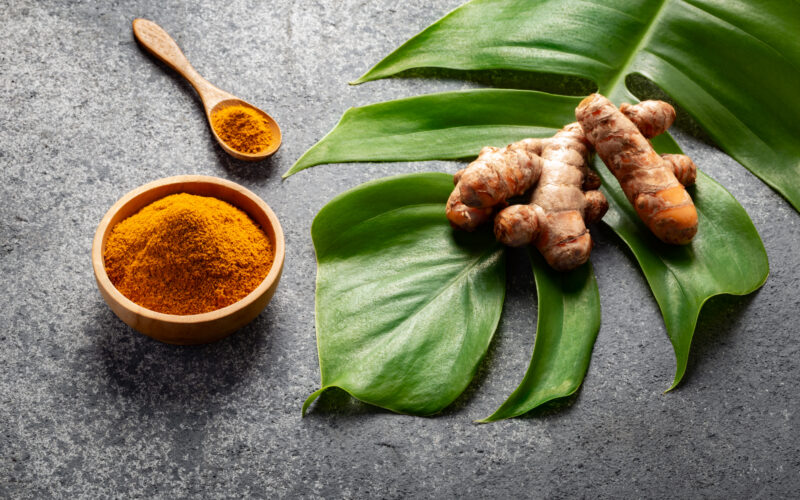Turmeric, the golden spice or sometimes known as the “Indian saffron”, holds an important place not only in traditional medicine, and as a condiment and coloring agent, but also has a socio-cultural significance especially in India and other southeast Asian countries. India is the largest producer, consumer and exporter, accounting for over 62 percent of the global trade in turmeric.
Turmeric is under pressure of late after hitting record high. The upturn which began in mid-2023, saw the yellow spice recording fresh all-time high in May 2024, but is now seen cooling off. Turmeric futures on NCDEX are currently trading down by about 32 percent from the record highs of Rs.20,430 per 100 kg reached in May 2024. Considering the first ten months of 2024, it is down by about three percent. It had posted yearly gain of about 70 percent in 2023.
Delay in sowing during 2023 kharif season, erratic monsoons, crop damage and concerns over yields have raised worries over output amidst robust demand, bolstering turmeric prices. Data from the Spices Board showed that the total area under turmeric in 2023-24 declined to 3,05,182 ha compared to 320782 ha sown a year earlier. The decline is mainly attributed to the fall in acreage in the major turmeric growing states of Telangana and Andhra Pradesh, by 21.54 and 38.92 percent respectively, on a year-on-year basis. In Maharashtra, which is the largest turmeric producing state, it was sown in 89,273 ha in FY 2023-24, registering a rise of only one percent on a year-on-year basis. Farmers opting for more remunerative crops like oilseeds, cotton, etc. too led to lower acreage.
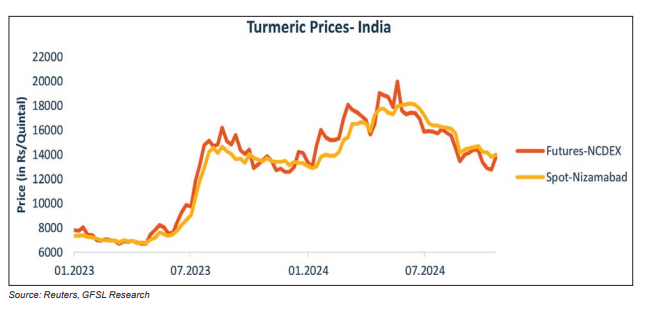
Subsequently, the total output declined as well. Production declined for the second straight year, by 8.16 percent to 10,74,526 tonnes in FY 2023-24. Production in Maharashtra grew hardly one percent. Production from other major producers Telangana and Andhra Pradesh declined over 30 percent, while in Tamil Nadu, output declined 16 percent despite a rise in acreage. In the meantime, production in Karnataka and Madhya Pradesh increased.
The bullishness witnessed in the first half of the year has started to wane. Rise in area under turmeric cultivation in 2024 kharif season and decline in exports put a downward pressure on the yellow spice, dragging it down from the record highs. As the sowing season commenced, relatively favourable weather and higher prices may have led a rise in areas under turmeric cultivation in the country. Market estimates area under turmeric cultivation this kharif season will rise by 20-35 percent compared to last year, mainly due to remunerative price for the produce.
A decline in exports is weighing on the sentiments as well. According to the Spices Board, turmeric export declined to 1,62,019 tonnes in FY 2023-24 compared to1,70,085 tonnes exported a year earlier, registering a decline of nearly five percent. However, in value terms a 12.5 percent rise was seen. For the April-July period this year, 61,609.83 tonnes of turmeric was exported from the country compared to 71,616.73 tonnes during the same period last year, down by 14 percent. Geopolitical tension in some of the major export destinations has been affecting exports. Political unrest in Bangladesh, the largest importer of Indian turmeric, during July this year, and ongoing tensions in Middle East are affecting exports.
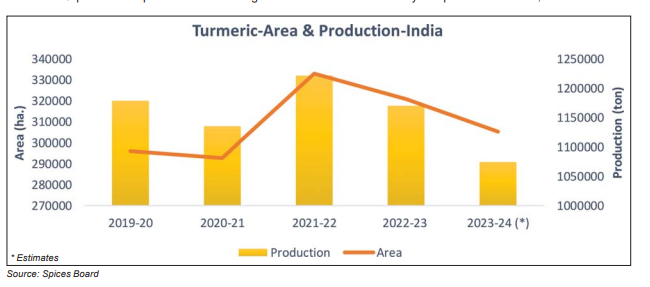
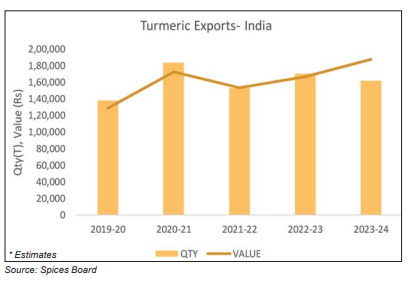
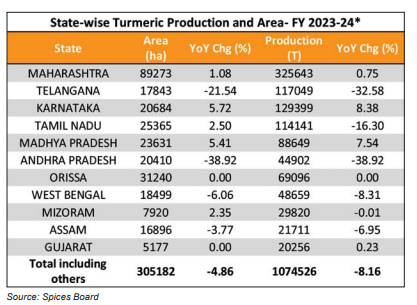
Yet, lower arrivals in the spot market, dwindling stocks and robust festival demand are probably arresting steep declines. The festival season has commenced and demand for spices is anticipated to rise during this season. Decline in production in the last two years resulted in lower carryover stocks as well, which is estimated to be around 30 lakh bags. Reports of crop damage due to heavy rains and flooding during September in the major turmeric growing states of Telangana, Andhra Pradesh and Maharashtra may lend support as well. According to a preliminary report by Andhra Pradesh’s horticulture department, more than 3,100 ha were affected by heavy rainfall and floods. As the crop is at a growing stage, weather, North-East monsoon, and export demand may play decisive roles in setting the trend until the next crop arrives in mid-January.

